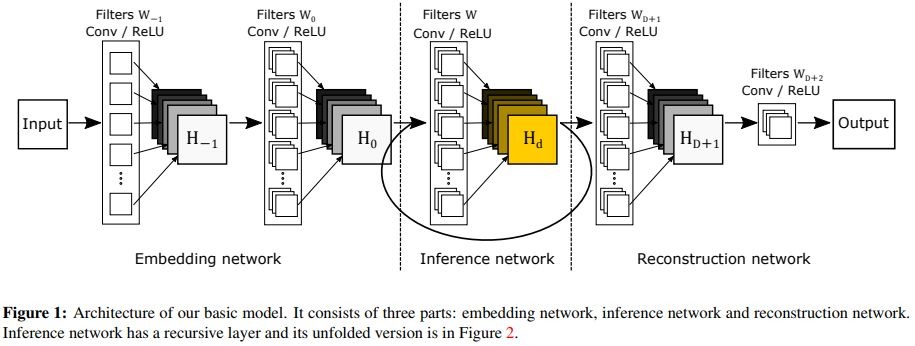Keyword [RDN] [RDB]
Zhang Y, Tian Y, Kong Y, et al. Residual dense network for image super-resolution[C]//Proceedings of the IEEE Conference on Computer Vision and Pattern Recognition. 2018: 2472-2481.
1. Overview
1.1. Motivation
- Most SR models do not make full use of the hierarchical feature from the original LR image
- Hierarchical features give more clues for reconstruction
- Interpolation of LR image will increase computation and lose details of LR image
- Higher growth rate of dense block can improve performance but hard to train
In this paper, it proposed residual dense network (RDN) consist of residual dense block (RDB)
- contiguous memory mechanism (CM)
- local feature fusion (LFF). deal with high growth rate
- global feature fusion (GFF)
- local residual learning (LRL)
- global residual learning (GRL)
1.2. Related Work
- VDSR, IRCNN. residual learning
- DRCN, DRRN. recursive learning

Memnet. memory block


ESPCN. sub-pixel
1.3. Architecture

contains four parts
SFENet (shallow feature extraction net)

RDBs (residual dense blocks)

- DFF (dense feature fusion)
contains GFF (1x1 for fusion, 3x3 for extraction effective in another paper).

- UPNet (up-sampling net)

inspired by CVPRW 2017

1.4. RDB

- CM
passing the state of preceding RDB to each layer of current RDB.

LFF
find that as G grows, very deep dense nerwork without LFF would be hard to train.

LRL

1.5. Details
- remove BN (performance and memory)
- remove pooling
- L1 loss
- self-ensemble method
1.6. Dataset
- DIV2K (800 train, 100 valid, 100 test)
- 5 benchmark dataset for testing (Set5, Set14, B100, Urban100, Manga109)
1.7. Degradation Model
- bicubic
- Gaussian kernel
- bicubic + Gaussian noise
2. Experiments
2.1. Study of D, C, G
- D. number of RDB
- C. number of conv layers in RDB
- G. growth rate
the larger the better.

2.2. Ablation Study


2.3. Comparison

when scaling factor become larger, RDN not better for MDSR (depth, multi-scale, larger patch size).


Method using interpolated LR image would produce artifacts and blur.
